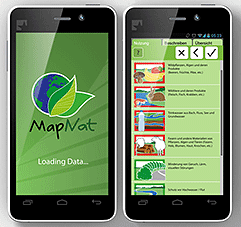THE PROJECT

Mapping and assessment of ecosystems and their services (ES) are core to the EU Biodiversity (BD) Strategy. They are essential if we are to make informed decisions. Action 5 sets the requirement for an EU-wide knowledge base designed to be: a primary data source for developing Europe’s green infrastructure; resource to identify areas for ecosystem restoration; and, a baseline against which the goal of ‘no net loss of BD and ES’ can be evaluated.
In response to these requirements, ESMERALDA (Enhancing ecoSysteM sERvices mApping for poLicy and Decision mAking) aims to deliver a flexible methodology to provide the building blocks for pan-European and regional assessments. The work will ensure the timely delivery to EU member states in relation to Action 5 of the BD Strategy, supporting the needs of assessments in relation to the requirements for planning, agriculture, climate, water and nature policy. This methodology will build on existing ES projects and databases (e.g. MAES, OpenNESS, OPERAs, national studies), the Millennium Assessment (MA) and TEEB. ESMERALDA will identify relevant stakeholders and take stock of their requirements at EU, national and regional levels.
The objective of ESMERALDA is to share experience through an active process of dialogue and knowledge co-creation that will enable participants to achieve the Action 5 aims. The mapping approach proposed will integrate biophysical, social and economic assessment techniques. Flexibility will be achieved by the creation of a tiered methodology that will encompass both simple (Tier 1) and more complex (Tier 3) approaches. The work will exploit expert- and land cover-based methods, existing ES indicator data and more complex ES models. As a result the outcomes will be applicable in different contexts. The strength of the ESMERALDA consortium lies in its ability to make solutions for mapping and assessment problems available to stakeholders from the start of the project, because our expertise allows us to build on existing research projects and data sharing systems.
Photo Credit: CHRISTIAN URBAN, KIEL UNIVERSITY
